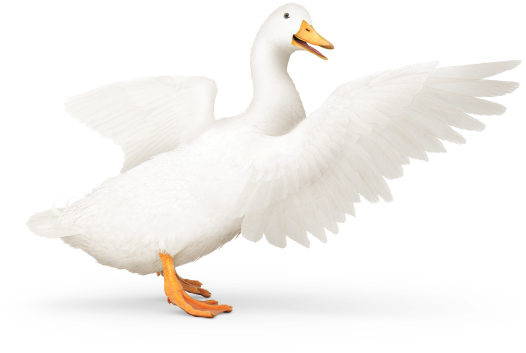Whole life insurance policies offer lifelong coverage, a death benefit, and a cash value component. Some whole life policies may also pay dividends to policyholders when the insurer performs well financially. Policyholders can use dividends for nearly anything, and, in many cases, they aren’t taxable. Aflac offers whole life insurance policies for individuals and families that can provide added financial protection and peace of mind. Read on to learn how life insurance dividends work and find out if a dividend-paying whole life insurance policy is right for you.
Table of Contents
A dividend is an annual payment to a policyholder based on the insurer’s financial performance. Dividends are not guaranteed, but may be paid out if the insurer has strong financial performance by doing well in areas such as investment performance, how many claims were paid out compared to premiums paid in, and operational costs.1
Dividend-paying whole life insurance is a type of permanent life insurance that offers lifelong coverage, a death benefit, and the potential to earn dividends based on the insurer’s performance. If you hold one of these policies, you’re considered a company stakeholder entitled to dividend payments and may receive them annually. These payments aren’t guaranteed, and depend on the company’s financial performance, but can be a valuable benefit of a life insurance policy.
Like other permanent policies, dividend-paying whole life insurance also contains cash value. Part of each premium goes toward the cash value, which grows tax-deferred at a fixed interest rate. You can access the cash value via borrowing or withdrawals when it grows large enough. Between dividends and cash value, dividend-paying whole life insurance can offer more potential living benefits than other policy types.
You can receive and use your whole life insurance dividends in several ways:2
Receiving dividends in cash involves having the insurance company send you a check or ACH payment to a personal bank account. This is the most straightforward and flexible method since you can use the funds for anything, such as:
Insurers may let you leave your dividends in a separate savings account with the insurer. Your dividends then earn interest at a rate the insurer specifies. This option offers liquidity and convenience since you can withdraw these funds at any time. You don’t need to deposit a check and manage the money yourself, yet you can continue saving and earning interest.
You can use your dividends to pay for your policy as well. Just request that the insurer put your dividends toward future premiums, reducing the amount you owe. This can help you reduce the cost of maintaining coverage in years when your insurer has great financial performance.
Another option for altering your policy is to get additional coverage rather than reduce your premiums. This is called purchasing paid-up coverage because you can add more to your death benefit without a corresponding premium increase. Going this route may be a good way to reduce the impact of inflation or increase your death benefit if your financial circumstances necessitate it.
If you borrowed against your cash value, you could ask the insurer to put the dividends toward your policy loan balance. This can help you pay off your loan without using your regular income.

Don’t wait until it’s too late. Help cover yourself and your family with coverage from Aflac.
Get StartedLife insurance dividends are generally not subject to taxes for most uses since the company generated the gains that allow dividends from policyholders. They are seen as a refund of overpaid premiums rather than a profit and are treated as contract distributions.
The exception is if you leave dividends in the policy to earn interest. Gains earned as interest may be taxable.2 Therefore, it may be more financially worthwhile to take the dividends as tax-free cash to reinvest in investments that may be more rewarding or use them to pay premiums and invest your savings.
Here are some factors to consider when determining if dividend-paying whole life insurance is suitable for you:
Life insurance dividends can offer potential income in addition to your death benefit and cash value component. You can use your dividends in many ways, from receiving them as cash to putting the funds toward future premiums, giving you more flexibility.
Aflac offers whole life insurance policies with lifelong coverage and cash value. To learn more about our life insurance policies and determine which type of coverage is right for you, speak with an Aflac agent today.
Get Started
Whole life insurance rates can vary based on your age. Our whole life insurance rates chart will show how much whole life insurance may cost you.

Whole life insurance offers lifelong coverage and cash value growth. Learn how whole life insurance works and the pros and cons of this policy.
1 Policygenius – Life Insurance Dividends Explained. Updated January 4, 2024. https://www.policygenius.com/life-insurance/dividend-paying-whole-life-insurance/. Accessed March 27, 2025.
2 NerdWallet - What Are Life Insurance Dividends? Updated December 4, 2023. https://www.nerdwallet.com/article/insurance/life-insurance-dividends. Accessed March 27, 2025.
Content within this article is provided for general informational purposes and is not provided as tax, legal, health, or financial advice for any person or for any specific situation. Employers, employees, and other individuals should contact their own advisers about their situations. For complete details, including availability and costs of Aflac insurance, please contact your local Aflac agent.
Tier One Coverage
Life (Final Expense Life) - In Arkansas, Delaware, Idaho, Oklahoma, Oregon, Pennsylvania, Texas, & Virginia, Policies ICC21-AFLLBL21 and ICC21-AFLRPL21; and Riders ICC21-AFLABR22, ICC21-AFLADB22, and ICC21-AFLCDR22.
Tier One coverage is underwritten by Tier One Insurance Company. In California, Tier One Insurance Company does business as Tier One Life Insurance Company (Tier One NAIC 92908).
Coverage may not be available in all states, including but not limited to DE, ID, NJ, NM, NY or VA. Benefits/premium rates may vary based on state and plan levels. Optional riders may be available at an additional cost. Policies and riders may also contain a waiting period. Refer to the exact policy and rider forms for benefit details, definitions, limitations and exclusions.
Aflac’s family of insurers include Aflac, Aflac New York, Continental American Insurance Company, and Tier One Insurance Company.
Aflac Coverage
Life (A68000 Series) - In Arkansas, Idaho, Oklahoma, Oregon, Pennsylvania, Texas, & Virginia, Policies: ICC1368100, ICC1368200, ICC1368300, ICC1368400. In Delaware, Policies A68100-A68400. In New York, NY68100-NY68400. Term and Whole Life (B60000 Series) - In Arkansas, Idaho, Oklahoma, Pennsylvania, Texas, & Virginia, Policies: ICC18B60C10, ICC18B60100, ICC18B60200, ICC18B60300, & ICC18B60400. Group Whole Life (Q60000 Series) - In Arkansas, Delaware & Oregon, Policy Q60100M. In Idaho Policy Q60100MID. In Oklahoma, Policy Q60100MOK. In Texas, Policy Q60100MTX. Group Term Life (Q60000 Series) - In Delaware, Policies Q60200M. In Arkansas, Idaho, Oklahoma, Oregon & Texas, Policies ICC18Q60200M, ICC18Q60300C, ICC18Q60400C.
Aflac coverage is underwritten by American Family Life Assurance Company of Columbus. In New York, coverage is underwritten by American Family Life Assurance Company of New York.
Coverage may not be available in all states, including but not limited to DE, ID, NJ, NM, NY or VA. Benefits/premium rates may vary based on state and plan levels. Optional riders may be available at an additional cost. Policies and riders may also contain a waiting period. Refer to the exact policy and rider forms for benefit details, definitions, limitations and exclusions.
Aflac WWHQ | Tier One Insurance Company | 1932 Wynnton Road | Columbus, GA 31999.
Aflac New York | 22 Corporate Woods Boulevard, Suite 2 | Albany, NY 12211
Z2400318R1
EXP 5/26